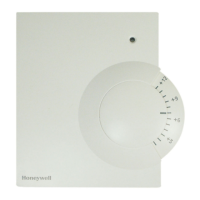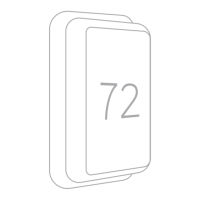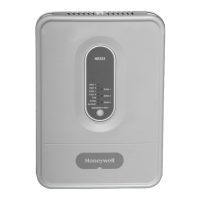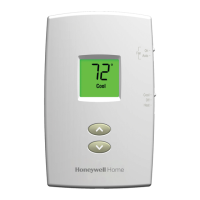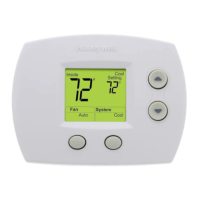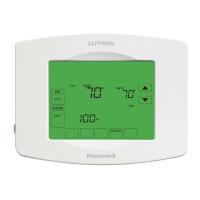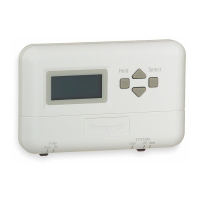Appendix
9
10. Appendix
10.1. Help with problems
Problem Cause Remedy
Batteries
inserted
incorrectly
► Insert the batteries
correctly.
Teach-in failed
Radio
connection
failure
► Eliminate interference
sources (metal, wireless
devices).
► Correct installation site.
► Repeat the teach-in.
HC60NG does
not react to set
point changes
on HCW 80
HC60NG
and HCW
80 not
teached-in
► Reset HC60NG.
► Follow the teach-in
procedure as described
in section “5”.
Teach-in
procedure
incorrect/
incomplete
► Repeat the teach-in.
After teach-in
red LED is on
and green LED
is flashing once
every 3 sec
Position of
HCW 80
incorrect
► Repeat the teach-in
keeping approx. 1 m
distance between HCW
80 and
HC60NG.
Communi-
cation loss
RF signal
blocked
► Relocate the HCW 80
(see section “3.2”).
Batteries of
HCW 80
exhausted
► Replace batteries in
HCW 80
(see section “9”).
Red LED of the
HC60NG is on
HC60NG
and
HCW 80 not
teached-in
► Follow the teach-in
procedure as described
in section “5”.
10.2. Specifications HCW 80
Batteries 1.5 V, type LR06, AA
Frequency 868.3 MHz (transmitter)
Operating temperature 0 °C to 50 °C
Storage temperature –20 °C to 70 °C
Humidity 5 % to 90 % relative humidity
IP class 30
10.3. Specifications HC60NG
Electrical
Receiver power supply 230 V AC (+10 %, –15 %), 50 Hz
Switch type SPDT potential free
Output rating 24-230 V AC, 10 A resistive,
3 A inductive, 0.6 p.f.
Wire access
(receiver only)
From the rear (wall box mounting),
right an bottom
RF
RF operation band ISM (868.0-868.6) MHz,
1 % duty cycle
RF communication
range
30 m in a residential building
environment
RF communication
technology
Short, high rate transmissions to
minimise air time and avoid
collisions
Blocking immunity Receiver class 2 (ETSI EN300
220-1 version 1.3.1)
RF binding method Factory pre-bound with the room
unit HCW 80 (kit Y6630D1007
only)
Environmental & Standard
Operating temperature 0 to 40 °C when relay load <8 A
0 to 30 °C when relay load >8 A
Shipping & storage
temperature
–20 to 55 °C
Humidity Humidity range 0 to 90 % rh,
non-condensing
IP class 30
Meeting the following
standards
EN 60730-1 (1995), EN 55014-1
(1997), EN 55014-2 (1996), ETSI
EN 300 220-3 (2000), ETSI
EN 301 489-3 (2000)
10.4. Device and function definition in
accordance with EN 60730-1
· Purpose of the device is temperature controlling
· Device fulfills protection class 2
· Independently installable electronic control system
with fixed installation
· Type of action is type 1.8
· Temperature of ball thrust hardness test for
housing components 75 °C and for live parts such
as, for example, terminals 125 °C
· EMC emitted interference test at 230 V~, 50 HZ
maximum
· Pollution severity is 2
· Rated voltage is 4000 V (corresponding to
overvoltage category III)
· Software class is A
10.5. WEEE directive 2002/96/EC – Waste
Electrical and Electronic Equipment
directive
► At the end of the product life dispose of
the packaging and product in a
corresponding recycling centre.
► Do not dispose of the unit with the usual
domestic refuse.
► Do not burn the product.
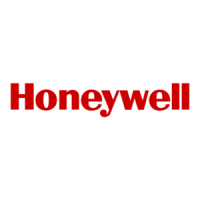
